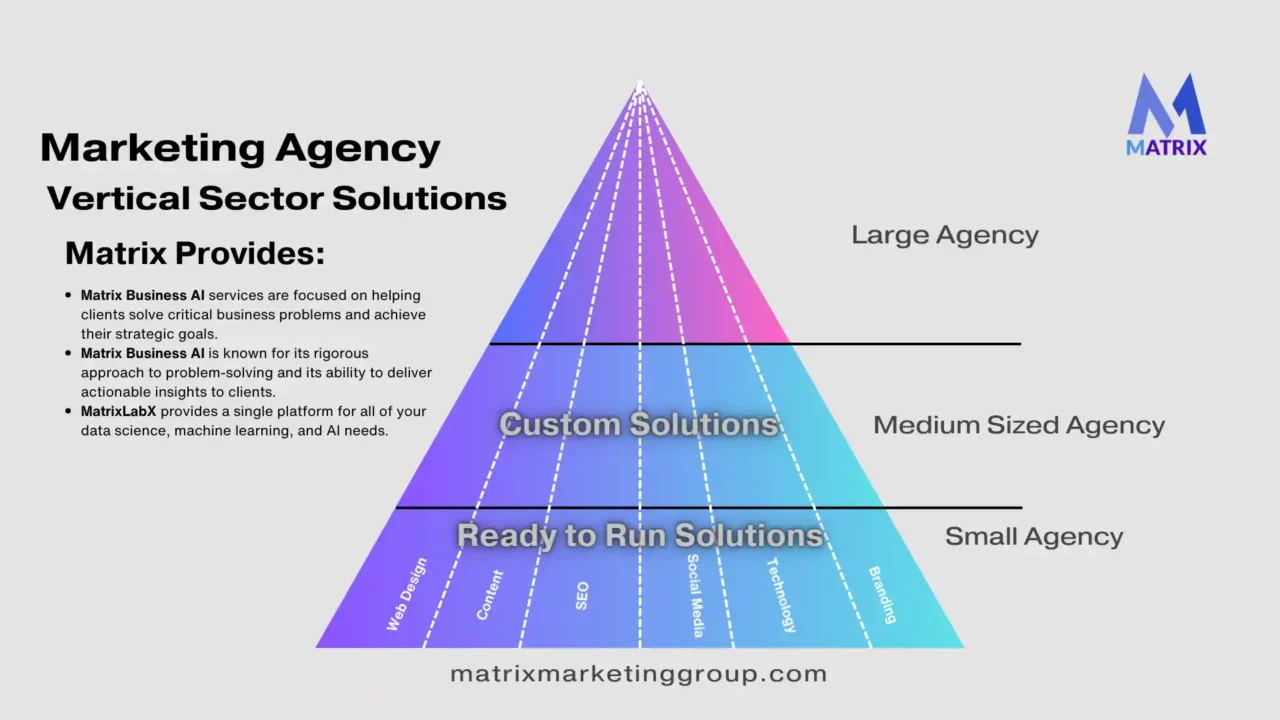2024 Digital Marketing Benchmarks: Navigating the Landscape with Benchmarks and Insights
2024 Digital Marketing Benchmarks: Navigating the Landscape with Benchmarks and Insights
In an era where digital marketing is continuously morphing, the 2024 Digital Marketing Benchmark Report by Digital Strategy emerges as an invaluable compass. This comprehensive report, a confluence of data, trends, and insights, is meticulously crafted to navigate the ever-evolving digital marketing landscape.
It highlights key industry trends and analyzes how these changes affect businesses and consumers alike. In a world where digital footprints are expanding, and consumer behaviors are rapidly shifting, these benchmarks serve as crucial tools.
They guide strategies and enable marketers to measure their performance against industry standards, ensuring they stay ahead in this dynamic and competitive field.
The Evolving Digital Landscape: Navigating New Norms in Digital Marketing
Digital marketing is constantly in flux, bringing novel challenges and opportunities each year.
As we delve into the evolving digital marketing landscape, we witness a paradigm shift influenced by key factors such as heightened privacy regulations, cookieless tracking, and the burgeoning prominence of AI.
These transformations are not merely technical shifts; they reshape consumer behavior and expectations, necessitating a reevaluation of marketing strategies.
Major Shifts in the Digital Marketing Ecosystem

Privacy Regulations: A New Era of Consumer Data Protection
Recent years have seen a seismic shift in privacy regulations, with legislation like GDPR and CCPA taking center stage.
These regulations have fundamentally altered how companies collect, process, and utilize consumer data. Marketers are now challenged to navigate a landscape where consumer consent is paramount.
This shift has evolved data collection practices, pushing marketers towards more transparent and ethical approaches.
Cookieless Tracking: Redefining Data Collection
The phasing out of third-party cookies, a staple in digital marketing, has set the stage for cookieless tracking.
This significant change is driving marketers to explore alternative methods for tracking consumer behavior, such as first-party data collection and contextual targeting.
The move away from cookies demands a more nuanced understanding of consumer interactions and preferences, shifting the focus towards data quality over quantity.
AI Prominence: Revolutionizing Marketing Strategies
Artificial Intelligence has taken a front seat in shaping marketing strategies. AI’s ability to analyze vast datasets and uncover insights has revolutionized targeting, personalization, and customer engagement.
From predictive analytics to chatbots, AI is not just a tool but a strategic partner in crafting compelling marketing narratives. Its prominence is a testament to the increasing demand for hyper-personalized and efficient marketing solutions.
Impact on Consumer Behavior and Expectations

These shifts in the digital marketing ecosystem have profoundly impacted consumer behavior and expectations. Privacy-conscious consumers now demand transparency and control over their data.
The demise of cookies has led to a thirst for more authentic and contextually relevant marketing interactions. AI’s influence has heightened expectations for personalized experiences, with consumers seeking brands that understand their unique needs and preferences.
Navigating the evolving digital landscape demands a blend of adaptability and foresight. Marketers must embrace these shifts, understanding their implications on consumer behavior and expectations. By doing so, they can craft effective strategies that resonate with the values and needs of the modern consumer.
Navigating Success: The Essential KPIs in Digital Marketing
In the labyrinth of digital marketing, success is not just about launching campaigns but about navigating them toward measurable goals. This is where Key Performance Indicators (KPIs) play a pivotal role.
They are not mere numbers; they are the compass that guides marketers through the tumultuous sea of digital strategies, ensuring that every effort aligns with the ultimate goal of business growth.
The critical KPIs covered in the latest benchmark report elucidate how these metrics vary across different industries, company sizes, and marketing channels. Moreover, it provides pragmatic examples of how companies can harness these benchmarks to steer their marketing strategies toward success.
Are Your Marketing Efforts a Shot in the Dark? Let’s Turn on the Spotlight!
Imagine having the clarity of seeing your marketing strategy from a bird’ s-eye view and understanding every nuance of your campaigns. Our comprehensive audit delves into the core of your marketing DNA, dissecting each campaign with surgical precision to identify the powerhouse strategies and weed out the underperformers.

Key Performance Indicators: The Metrics That Matter
Website Traffic: The Pulse of Online Presence
Website traffic stands as a primary indicator of online visibility and brand awareness. It’s essential to monitor not just the volume but the quality of traffic, understanding where visitors are coming from and what they do once they land on your site.
Conversion Rates: The Transition from Visitor to Customer
Conversion rates transcend beyond website visits, signifying the percentage of visitors who take a desired action. Whether filling out a form, purchasing, or subscribing to a newsletter, conversion rates are a quintessential measure of effectiveness in turning prospects into customers.
Social Media Engagement: The Barometer of Brand Resonance
In social media, engagement metrics such as likes, shares, comments, and followers offer insights into how well your content resonates with your audience. They indicate your brand’s ability to create meaningful connections and foster a community around your products or services.
Email Marketing Metrics: The Indicators of Direct Impact
Email marketing metrics, including open rates, click-through rates, and unsubscribe rates, provide a direct insight into the effectiveness of your email campaigns. They help you understand how your audience receives and interacts with your messages.
Categorization and Comparison of Benchmarks

The benchmarks are meticulously categorized and compared across various spectrums to offer a comprehensive view.
Conversion Ratios by Industry: A Comprehensive Breakdown
Detailed breakdown of website conversion ratios across various industries. These averages vary significantly based on specific business models, website types, and marketing efforts.
Ecommerce:
- Average: 1.84% – 3.71%
- Fashion & Apparel: 2.7%
- Health & Beauty: 3.3%
- Entertainment: 2.5%
- Household Goods: 2.1%
- Electronics: 1.9%
- Sports & Recreation: 1.18%
- Car & Motorcycle Retailers: 1.36%
- Fashion, Clothing & Accessory Retailers: 1.41%
B2B:
- Average: 2.23% – 4.31%
- Software & SaaS: 1.1%
- Scientific Testing & Measurement: 1.3%
- Higher Education: 1.4%
- Financial Services: 2.3%
- Professional Services: 2.5%
- Manufacturing: 3.1%
Other:
- Travel & Hospitality: 2.0% – 5.0%
- Real Estate: 2.5% – 4.0%
- Lead Generation: 2.3% – 5.3%
- Non-Profit: 1.5% – 3.0%
- Blog: 1.0% – 2.5%
Additional Factors:
- Device: Windows (4.94%), Mac (3.78%), ChromeOS (2.9%), iOS (1.88%), Android (1.8%)
- Platform: Mobile App Store Page (26.4%)
Remember:
- These are just benchmarks. Your actual conversion rate will vary.
- Analyze your specific industry and business model for deeper insights.
- Consider factors like website traffic, user behavior, and marketing campaigns.
- Track and optimize your website for continuous conversion rate improvement.
Industry-Specific Benchmarks
Each industry has its unique digital marketing landscape. The report delineates benchmarks specific to different industries, allowing businesses to measure their performance against relevant competitors.
Company Size: A Scale for Comparison
The size of a company can significantly influence its marketing strategies and outcomes. The report contrasts KPIs across different company sizes, offering insights tailored to various scales of operation.
Marketing Channels: Diverse Paths, Different Metrics
Different marketing channels have distinct benchmarks. The report compares KPIs across various channels like search engines, social media, and email, providing a holistic view of digital marketing performance.
Leveraging Benchmarks: Real-World Applications
Tailoring Strategies to Industry Standards
For instance, a retail company noticing its website traffic lagging behind the industry average might invest more in SEO and content marketing to boost its online visibility.
Scaling Efforts According to Company Size
Upon comparing its social media engagement rates with similar-sized companies, a small startup might find that it’s outperforming in engagement but lagging in reach, prompting a strategy shift towards expanding its audience.
Optimizing Channel-Specific Strategies

An e-commerce business might observe through the report that their email marketing click-through rates are below the industry average, leading them to revamp their email content and design to foster higher engagement.
The detailed analysis of KPIs and their categorization across industries, company sizes, and marketing channels provides businesses with a roadmap to benchmark their performance and refine their strategies.
By leveraging these insights, companies can understand where they stand in the competitive landscape and identify areas of improvement and opportunities for growth, charting a course toward digital marketing success.
Top Trends Shaping 2024: Strategies for a Future-Proof Business
The business landscape of 2024 is being sculpted by emerging trends that are as transformative as they are inevitable. Understanding these trends is not just about keeping pace; it’s about harnessing their potential to carve a competitive edge.
This article explores the top trends identified in our latest report, dissecting their significance in current corporate approaches and offering actionable insights for businesses to capitalize on these evolving paradigms.
Trend 1: Hyper-Personalization through AI
The Emergence of AI-Driven Personalization
Artificial Intelligence (AI) has transcended beyond being a mere technological marvel to becoming a central pillar in customer experience strategies. Hyper-personalization involves using AI to tailor experiences, products, and communications to individual customer preferences at scale, thereby fostering deeper customer engagement.
Corporate Adoption of AI Personalization
Leading companies are integrating AI into their CRM systems, utilizing advanced algorithms to decipher complex customer data. This move enables predictive personalization, enhancing customer interactions and improving retention rates.
Actionable Strategies
To ride this wave, businesses should invest in AI infrastructure and prioritize collecting qualitative customer data. The focus should be ethical AI use, ensuring transparency and privacy in personalization efforts.
Trend 2: Green Business Practices
Sustainability as a Strategic Imperative
Sustainability is evolving from a corporate social responsibility initiative to a fundamental business strategy. This trend involves adopting environmentally friendly practices across all business operations, responding to the growing consumer demand for sustainable brands.
How Companies Are Embracing Sustainability
Progressive businesses are embedding sustainability into their core values. Initiatives range from utilizing renewable energy sources to adopting sustainable supply chain practices, thus reducing ecological footprints while enhancing brand image.
Leveraging Green Strategies
Companies should conduct comprehensive sustainability audits and set quantifiable environmental targets. Communicating these initiatives effectively can serve as a significant market differentiator, appealing to the environmentally conscious consumer.
Trend 3: The Remote Work Revolution
Redefining the Workplace
The shift towards remote and hybrid work models is reshaping the traditional office environment. Enabled by technological advancements, this trend allows for a more flexible and balanced approach to work.
Corporate Response to Remote Work
Many organizations are transitioning to hybrid models, balancing remote work with in-office interaction. This approach provides flexibility while maintaining team cohesion and company culture.
Strategies for Remote Work Adoption
Investing in technology to facilitate efficient remote work is key. Developing policies supporting employee well-being in a remote setting is essential for a productive and motivated workforce.

Trend 4: Blockchain Beyond Cryptocurrency
Blockchain’s Expanding Horizons
Blockchain technology is venturing beyond its cryptocurrency origins, finding applications in various business operations. This trend is marked by its potential to enhance transparency, security, and transaction efficiency.
Corporate Blockchain Initiatives
Organizations are exploring blockchain for applications such as supply chain management, smart contracts, and secure data sharing, capitalizing on its potential to streamline operations and reduce fraud.
Actionable Blockchain Approaches
Businesses should start by educating themselves on blockchain’s potential applications in their industry. Experimenting with pilot projects can offer insights into the practical benefits and challenges of integrating blockchain into business processes.
The trends shaping the business world in 2024 present a unique blend of challenges and opportunities. By understanding and strategically embracing these trends, businesses can position themselves at the forefront of innovation and growth. The future favors the bold – those ready to innovate, adapt, and lead in a rapidly evolving business landscape.
Emerging Technologies and Tools: Revolutionizing Marketing Strategies
In a world where technological evolution is the only constant, the emergence of disruptive technologies and tools heralds a new era for marketing strategies.
The most promising technologies highlighted in our report are AI-powered native AI product management and AI content generation.
These innovative technologies can address key marketing challenges and achieve specific business goals, complemented by practical examples of companies already harnessing their potential in AIProdPad, AIBrandPad, and AIContentPad.
Transforming Customer Engagement
AI-powered marketing automation represents a seismic shift in how businesses interact with customers.
By leveraging machine learning and data analytics, this technology enables marketers to automate and optimize real-time customer interactions, ensuring more personalized and efficient experiences.
Addressing the Challenge of Personalization
In an era where personalization is king, AI-powered tools can analyze consumer behavior and preferences, enabling businesses to deliver tailored messages and offers. This level of personalization enhances customer engagement and loyalty.
Achieving Scalability and Efficiency
AI automation allows companies to scale their marketing efforts without proportionate increases in time or resources. It streamlines routine tasks like email marketing, customer segmentation, and retargeting campaigns, freeing marketers to focus on creative and strategic endeavors.
Real-World Implementation
Leading e-commerce platforms already leverage AI to recommend products based on browsing history and purchase behavior. Similarly, service providers are using AI chatbots to provide instant customer support, making interactions more efficient and reducing wait times.

Immersive Experiences: AR/VR
Elevating Customer Experiences
Augmented Reality (AR) and Virtual Reality (VR) redefine customer experience. These technologies offer immersive and interactive experiences that were previously unimaginable, allowing brands to engage with consumers in new and exciting ways.
Overcoming Engagement Barriers
AR and VR break down traditional marketing barriers, offering consumers hands-on experiences. They provide a unique way for brands to showcase products and services, allowing customers to experience them in a simulated environment.
Enhancing Brand Recall and Loyalty
Immersive experiences created through AR/VR have a higher likelihood of creating lasting impressions. They elevate brand recall and foster a deeper emotional connection with the brand, translating into increased customer loyalty.
Practical Applications
Retail brands utilize AR to allow customers to visualize products in their homes before purchasing, while travel companies use VR to tour destinations virtually. These applications enhance the customer experience and provide a competitive edge in the market.
Emerging technologies like AI-powered marketing automation and AR/VR are not just futuristic concepts but practical tools that reshape the marketing landscape today.
By embracing these technologies, companies can address prevalent marketing challenges, achieve greater efficiency and personalization, and create unforgettable customer experiences. As we progress, these technologies will continue to evolve, offering even more innovative ways for marketers to connect with their audiences.
The businesses that recognize and leverage these opportunities will be the ones leading the charge in the ever-evolving world of digital marketing.
Future-proofing Your Strategy: Navigating the Digital Marketing Landscape
In the fast-paced realm of digital marketing, the only constant is change. As technology evolves at a breakneck speed, agility and adaptability become more than just buzzwords – they are essential survival skills.
Future-proof their marketing strategies. Drawing key takeaways from our comprehensive report, we’ll offer actionable tips and resources to ensure your marketing efforts remain effective and relevant in an ever-changing digital landscape.
The Importance of Agility and Adaptability
Staying Ahead in a Dynamic Environment
The digital marketing world is a dynamic and often unpredictable environment.
Agility – the ability to move quickly and easily – is critical in responding to new trends, technologies, and consumer behaviors.
Adaptability, or the capacity to adjust to new conditions, is equally important. Together, these qualities enable marketers to pivot strategies effectively, embrace innovation, and stay ahead of the competition.
Embracing Change as a Constant
The key to thriving in digital marketing is to adapt to change and anticipate and embrace it.
This means being open to new ideas, experimenting with emerging technologies, and continually refining strategies based on data and feedback.
Building a Future-Proof Marketing Strategy
Our report reveals several crucial elements for crafting a future-proof marketing strategy:
Diversify Your Marketing Mix
Don’t put all your eggs in one basket. A diverse marketing mix – spanning various channels and tactics – can help mitigate risks and maximize reach.
Invest in Data Analytics
Data is the lifeblood of digital marketing. Investing in robust analytics tools and developing data literacy can empower decision-making and strategy refinement.
Foster a Culture of Continuous Learning
The rapid pace of the evolution of digital marketing demands a commitment to ongoing learning. Encouraging a culture where experimentation and upskilling are the norms can drive innovation and adaptability.
Implementing Continuous Learning and Improvement
Regularly follow industry blogs, podcasts, and webinars. Resources like Moz Blog for SEO, HubSpot for inbound marketing, and Marketing Land for general digital marketing are invaluable.
Leverage Online Courses
Platforms like Coursera, Udemy, and LinkedIn Learning offer courses on various aspects of digital marketing. Regularly enrolling in these courses can keep your skills sharp.
Attend Industry Conferences
Conferences and workshops are great for learning about the latest trends and networking with peers. Events like the Social Media Marketing World or HubSpot’s Inbound conference offer deep insights and learning opportunities.
Experiment and Measure
Use A/B testing to experiment with new strategies and measure their effectiveness. Tools like Google Analytics and SEMrush can provide valuable data to guide your decisions.
Build a Learning Organization
Encourage knowledge sharing within your team. Regular team meetings to discuss new trends, tools, or strategies can foster a culture of continuous learning.

Stop Wasting Ads! Get Laser-Targeted Clicks (and Customers)
Tired of ad duds? Get eyeballs on your brand with laser-focused online ads that convert. Click to unleash the power of targeted marketing!

Stop Scrolling, Start Selling: Social Ads That Convert Like Crazy
Get ready to unleash the power of AI-targeted ads that turn likes into leads and leads into SALES.
Conclusion
In the rapidly evolving world of digital marketing, being future-proof means being prepared to evolve.
By cultivating agility and adaptability, diversifying your marketing mix, leveraging data, and committing to continuous learning, you can ensure that your marketing strategy not only survives but thrives in the face of change.
Remember, the best way to predict the future in the digital marketing landscape is to create it.

